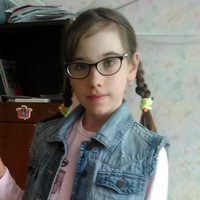
Перевести текст!!!! Since operating systems have historically been closely tied to the architecture
of the computers on which they run, we bwill look at succeswsive generatiions of computers to see what their operaiting systems were like. The first true digital computer was designed by the English mathematician Charles Babbage (1792-1871). Although Babbage spent most of his life and fortune trying to build his "analytical engine,"he never got it working properly because it was purely mechanical,and the technology of his day could not produce the required wheels, gears, and cogs to the high precision that he needed. Needless to say, the analytycal engine did not have an operaiting system. Babbage realized that he would need soft ware for his analytycal engine, so he hired a young woman named Ada Lovelace, who was the daughter of the famed British poet Lord Byron, as the world's first programmer. The programming language Ada is named after her. After Babbage's unsuccessful effrts, little progress was made in constructing digital computers until World War ll. Around the mid-1940s, Howard Aiken at Harvard , John von Neumann at the Institute for Advanced Study in Princeton,J. Presper Eckert and William Mauchley at the University of Pennsylvania, and Konrad Zuse in Germany,among others , all succeeded in building calculating engines. The first ones used mechanical relays but were very slow, with cycle times measured in seconds. Relays were later replaced by vacuum tubes.These machines were enormous, filling up entire rooms with tens of thousands of vacuum tubes,but they were still millions of times slower than even the cheapest personal computers available today. In these early days asingle group of people designed,built,programmed, operaited,and maintainat each machine.All programmig was done in absolute machine language,often by wiring up plug boards to control the machine's basiv functions. 0
0
 0
0
Ответы на вопрос
 Внимание! Ответы на вопросы дают живые люди. Они могут содержать ошибочную информацию, заблуждения, а также ответы могут быть сгенерированы нейросетями. Будьте внимательны. Если вы уверены, что ответ неверный, нажмите кнопку "Пожаловаться" под ответом.
Внимание! Ответы на вопросы дают живые люди. Они могут содержать ошибочную информацию, заблуждения, а также ответы могут быть сгенерированы нейросетями. Будьте внимательны. Если вы уверены, что ответ неверный, нажмите кнопку "Пожаловаться" под ответом.

не весь текст набран правильно вот перевод,не все слова перевелись. а вообще пользуйтесь переводчиком
Так как операционные системы были исторически близко привязаны к архитектуре компьютеров, на которых они бегут, мы, bwill смотрят succeswsive generatiions компьютеров, чтобы видеть то, на что походили их operaiting системы. Первый истинный компьютер был разработан английским математиком Чарльзом Бэббэджем (1792-1871). Хотя Бэббэдж потратил большую часть своей жизни и состояния, пытающегося построить его "аналитическую машину, "он никогда не получал это работающий должным образом, потому что это было просто механически, и технология его дня не могла произвести необходимые колеса, механизмы, и винтики к высокой точности, в которой он нуждался. Само собой разумеется у analytycal двигателя не было operaiting системы. Бэббэдж понял, что будет нуждаться в мягком изделии для своего analytycal двигателя, таким образом, он нанимал молодую женщину по имени Ада Лавлэс, которая была дочерью знаменитого британского поэта Лорда Байрона как первый в мире программист. Язык программирования Ада называют в честь нее. После неудачного effrts Бэббэджа небольшие успехи были сделаны в строительстве компьютеров до мировой войны ll. Вокруг середины 1940-ых, Говарда Эйкена в Гарварде, Джона фон Ноймана в Институте Специального исследования в Принстоне, Дж. Преспере Экерте и Уильяме Мочли в Университете Пенсильвании, и Конраде Цузе в Германии, среди других, все преуспели в том, чтобы строить вычисление двигателей. Первые использовали механические реле, но были очень медленными со временем цикла, измеренным в секундах. Реле были позже заменены электронными лампами. Эти машины были огромны, заполняя все комнаты десятками тысяч электронных ламп, но они были все еще миллионами времен медленнее чем даже самые дешевые персональные компьютеры, доступные сегодня. В эти первые годы asingle группа людей проектировал, построенный, запрограммированный, operaited, и maintainat каждая машина. Весь programmig был сделан на абсолютном языке программирования, часто телеграфируя включают правления, чтобы управлять функциями basiv машины.
 0
0
 0
0

Evolution of Operating Systems with Successive Generations of Computers
Operating systems have evolved over time, closely tied to the architecture of the computers they run on. Let's explore the successive generations of computers to understand the evolution of operating systems.
The First True Digital Computer: Charles Babbage's Analytical Engine
The first true digital computer was designed by the English mathematician Charles Babbage (1792-1871). Babbage's most notable creation was the "analytical engine," which he spent most of his life and fortune trying to build. However, due to the purely mechanical nature of the machine and the limitations of technology at the time, Babbage was unable to get it working properly. The required precision in the production of wheels, gears, and cogs was beyond the capabilities of the technology available during his time.
As a result, the analytical engine did not have an operating system. However, Babbage recognized the need for software to operate his machine. He hired Ada Lovelace, the daughter of the renowned British poet Lord Byron, as the world's first programmer. The programming language Ada is named after her.
Progress in Constructing Digital Computers: World War II Era
After Babbage's unsuccessful efforts, little progress was made in constructing digital computers until World War II. Around the mid-1940s, several individuals and teams succeeded in building calculating engines. Howard Aiken at Harvard, John von Neumann at the Institute for Advanced Study in Princeton, J. Presper Eckert and William Mauchley at the University of Pennsylvania, and Konrad Zuse in Germany, among others, all made significant contributions.
The early computers used mechanical relays, which were slow, with cycle times measured in seconds. However, these relays were later replaced by vacuum tubes, which improved the speed of the machines. Despite these advancements, early computers were still enormous, filling up entire rooms with tens of thousands of vacuum tubes. However, they were still millions of times slower than even the cheapest personal computers available today.
During this period, a single group of people typically designed, built, programmed, operated, and maintained each machine. All programming was done in absolute machine language, often by wiring up plug boards to control the machine's basic functions.
Conclusion
The evolution of operating systems has been closely tied to the advancements in computer technology. From the early days of mechanical computers to the development of vacuum tube-based machines, the need for operating systems became apparent. While Charles Babbage's analytical engine did not have an operating system, subsequent generations of computers saw the emergence of operating systems to manage and control the machines' functions.
Please let me know if there's anything else I can help you with!
 0
0
 0
0
Топ вопросов за вчера в категории Английский язык
Последние заданные вопросы в категории Английский язык
-
Математика
-
Литература
-
Алгебра
-
Русский язык
-
Геометрия
-
Английский язык
-
Химия
-
Физика
-
Биология
-
Другие предметы
-
История
-
Обществознание
-
Окружающий мир
-
География
-
Українська мова
-
Информатика
-
Українська література
-
Қазақ тiлi
-
Экономика
-
Музыка
-
Право
-
Беларуская мова
-
Французский язык
-
Немецкий язык
-
МХК
-
ОБЖ
-
Психология
-
Физкультура и спорт
-
Астрономия
-
Кыргыз тили
-
Оʻzbek tili



















